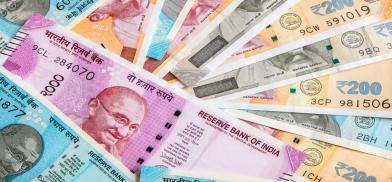Reviving the Indian economy: The vulnerable must be kept on policy radar
After relinquishing the post of Chief Economic Adviser to the Government of India in July 2018, Arvind Subramanian has now come out with his book, 'Of Counsel' (Penguin, Viking)

After relinquishing the post of Chief Economic Adviser to the Government of India in July 2018, Arvind Subramanian has now come out with his book, 'Of Counsel' (Penguin, Viking). The book documents Subramanian’s views on many aspects of the Indian economy in his own lucid style. There are several issues of current interest that have been referred to in the book but the argument of Subramanian as to why reforms have not kept pace to the desired extent rests essentially on one of the major strands of his thinking which he describes as crony socialism and stigmatised capitalism(page xxiii of the introduction).
Crony socialism manifested with many government institutions transacting assets within themselves, giving the private sector no opportunity to enter these areas, oil is a prime example. Stigmatised capitalism characterised itself in major defaults and fraudulent deals involving commercial banks and their borrowers resulting in what he calls a paralysis in policy making and slow resolution of Non-performing assets(NPAs).
But despite these setbacks, introduction of the Goods and Services Tax(GST), the Bankruptcy Code, the JAM (Jandhan, Adhar Mobile) infrastructure connectivity, Direct Benefit Transfer (DBT) for domestic LPG and NITI Aayog as a facilitator of cooperative and competitive federalism are some of the positives which he mentions in his four-year stint. He also gives his vision of the Universal Basic Income (UBI) and describes it as the Gandhian approach to look at current problems of economic inequality in society. Other critical issues dealt in the book relate to the global environment and trade issues and energy security. He calls for developing clean coal technology for dependence on coal otherwise will cost heavy to India given its relative low costs as compared to renewables. He also argues for a more balanced agricultural cropping pattern and moving away from a cereals only policy by suitably calibrating the support prices. On demonetisation, he describes it as a massive draconian monetary shock.
An interesting thought on the development paradigm which has been discussed in the book is what he calls as the "precocious development model". This model is akin to a precocious child who does good or bad things ahead of time. It unfolds in India with its highly agrarian economy, low levels of literacy and social fissures, yet with a thriving democracy.
Subramanian calls India an outlier with its emphasis on the exploitation of its rich mineral resources and creation of internal wealth for export as Foreign Direct Investment (FDI) by Indian industrialists. Despite India being an outlier, he laments the presence of a weak state taking the soft approach many times towards taxation and redistribution and making itself vulnerable to global changes at the macro-economic, a phenomenon described as "Latinisation" in the book. Another important feature which he mentions is capitalism without exit, resulting in investment shyness.
Although the book presents a well-argued chronicle of what has been the present development paradigm, it gives the impression to the reader that the present economic malaise has been inherited from the past and despite the best efforts of the present government, the problems of the economy continue as a legacy of the past. Capitalism and free enterprise need to be given a boost and for which more liberalisation seems to be the answer given in the book. A thoughtful analysis but there is no guarantee that the situation would be redeemed. Instead, the common taxpayer will have to bear the costs both in terms of fiscal rectitude, the recipe for which exists in the UBI, and more bailouts given the track of record of some of our businessmen and banks.
Dr. Subramanian is active on the Indian economic policy front, while he continues to be a visiting faculty at the Harvard Kennedy School. In a recent working paper, Subramanian made the dramatic claim that the real gross domestic product (GDP) in India grew at a rate between 3.5 percent and 5.5 percent from 2011-12 to 2016-17. Letting the cat among the pigeons, a debate ensued among economists about his estimates, mostly one-sided and critical of his estimates. He, however, stood by his observations. Defending his argument that India's GDP growth overestimated by 2.5 percent, he said that he had used a specific framework to validate GDP from the demand side. He also said that tools like GDP deflator could have been underestimated. Lending more credence to his GDP argument, he said no country has grown over 7 percent with exports below 5 percent.
His recent observations on COVID-19 have been that the government’s immediate focus should be on the Rabi crop harvest and the retail supply chain, besides strengthening the health infrastructure to battle the virus, amid limited financial and administrative resources.
As per the World Bank's latest assessment, India is expected to grow 1.5 percent to 2.8 percent during the current fiscal due to the impact of the COVID-19 pandemic and consequent lockdown.
Similarly, the IMF on Tuesday projected a GDP growth of 1.9 percent for India in 2020, as the global economy appears to enter the worst recession since the Great Depression of the 1930s.
With these subdued projections, India is expected to record its worst growth performance since the 1991 liberalisation of the economy.
On the question of a fiscal stimulus, many economists, including Subramanian, have argued for a Rs. 10 lakh crore package to revive the economy. While there is a need to have a larger package covering more sectors of the economy than what has been announced in the recent Rs.1.75 lakh crore package, the form and content of the package rather than the number is important. It has to immediately cater directly to the consumption and livelihood requirements of the vulnerable sections of society. Announcements focus more on the form but their fine print often defeats their content. As a result, the poor and the migrants remain where they were prior to the announcements.
(The writer is a retired Indian bureaucrat who worked in the labour ministry. He can be contacted at ppmitra56@gmail.com)














Post a Comment